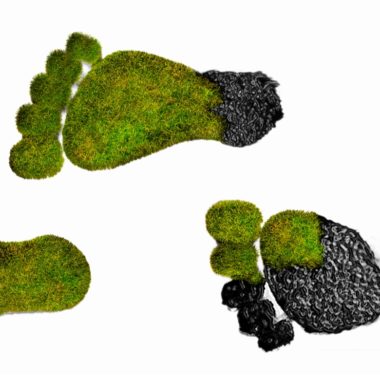Bank cards may seem like small, unimposing, everyday objects but they have a huge and measurable impact on the environment.
Just look at the manufacturing process. More than 30 million kg of PVC is used for banking card manufacturing. Then there are the reams of paper that tend to accompany the distribution of a new card, such as PIN code reminders, card carriers and instructions. That’s not even accounting for the environmental consequences of shipping cards around the world or end-of-life disposal.
This inevitably all adds up. Every year, the banking sector produces around six billion cards worldwide. If you compute the overall carbon footprint of these cards, you can see that more than 136,500 metric tons of carbon dioxide (C02) are emitted each year. That is the equivalent of 500,000 passengers taking a flight from Sydney to New York.
Consumers increasingly expect eco-responsible initiatives and are turning to more green alternatives in many (if not all) parts of their lives – including how they manage their finances.
What the ‘green movement’ means for the finance sector
It’s been well reported, but consumer awareness of their environmental impact has increased exponentially over the last few years. We can see this from the small gestures that people are making – such as using reusable coffee cups and recycling more regularly – through to more impactful life decisions, like driving electric vehicles and heating their homes with heat pumps.
This is playing out in the figures, too. According to 2017 research, 94% of Europeans say that the protection of the environment is important to them personally. The same report also suggests that consumers are more likely to turn away from brands that aren’t working to reduce or offset their environmental impact.
The finance sector has already made big steps in tackling environmental concerns – whether that’s a shift towards ethical banking or even the rise of mobile payments reducing the need for the creation of physical currency. But maintaining the status quo of bank cards as they are threatening to undermine the advancements already made in the industry.
What can banks do to address their carbon footprint?
So how can banks move forward, maintaining the security and convenience of bank cards while consecutively reducing the impact that they have on the environment?
Fortunately, leaps ahead in technology are providing a way for banks and financial institutions to align with this shift in consumer expectations. Changing what cards are made of and how they are made is a big part of the puzzle – and we explore that in more detail here.
But we have gone one step further and have created a suite of tools for banks to make a meaningful and positive change to their environmental impact.
Cutting down on paper usage
Services are increasingly being used to help banks cut down on excessive and unnecessary volumes of printed documents. We offer, for example, PIN by SMS services, payment card linkage to smartphones to enforce paper-free correspondence with consumers, as well as services to track and reduce the dependence on paper reports.
Measurement and transparency
Traditionally, banks have struggled to fully quantify and assess the actual carbon footprint of their cards – from the early stages of production right through to the end of the card’s life. In turn, this means banks haven’t been able to authentically help consumers understand the provenance of their bank cards. We can calculate this effectively and precisely, helping banks to communicate transparently with an increasingly eco-mindful customer base.
Offsetting
Once you’ve calculated the carbon footprint of a card, you can then work to offset those emissions and reach carbon neutrality. We work hand-in-hand with a certified carbon reduction programme to make sure that the impact of producing the cards is redressed.
Certification
In turn, this allows you to put the carbon neutral certification logo on your card, proving unequivocally that you’re a considerate and sustainable institution.
The benefits of going green
We’ve already seen a number of banks and financial services firms listening to the wider mood music around sustainability and turning it to their advantage. The Mastercard payment card from Doconomy (Sweden), for example, helps users to track and measure the CO2 emissions associated with their purchases – enabling them to limit the climate impact of their spending through climate savings, compensation, sustainable investments and climate refunds from partner brands.
This card, which enables an unprecedented degree of transparency for consumers, is eco-friendly too. It is made from sustainable plastic substitute by Thales and is connected to a mobile app that allows users to measure their carbon footprint from every purchase.
Then there’s digital-first banks, like Bunq, who have harnessed customer payments to plant 70,000 trees in just three months. A tangible environmental win that goes beyond just paying lip service to green issues – and a cause that consumers have clearly got behind.
What this all serves to underline is that banks can enjoy the dual benefit of reducing their impact on the environment and better connect with green-conscious consumers if they can tap into the new wave of services looking to address the historically carbon footprint of payment cards. To find out more, visit: https://www.thalesgroup.com/en/markets/digital-identity-and-security/banking-payment/cards/eco-friendly-credit-card



